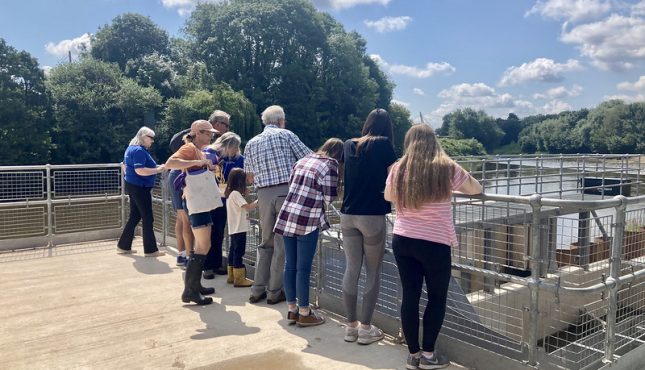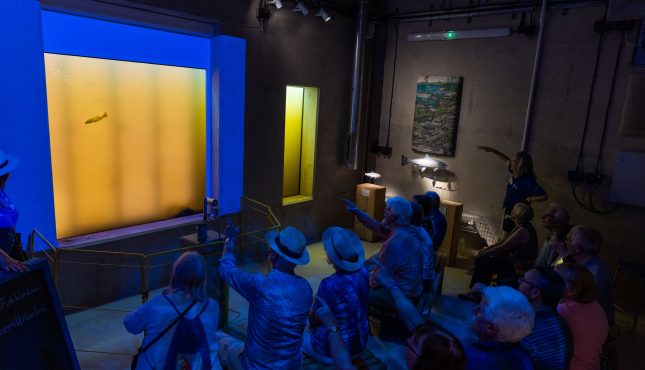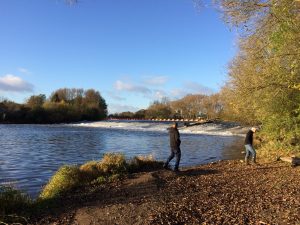The Secret Island in the Severn
Diglis Island was created alongside the construction of the weir and locks in the first half of the 19th century. As part of the creation of the Severn Navigation, 4 weirs were constructed between Worcester and Stourport in 1843-1845. Upper Lode weir at Tewkesbury was added in 1858. The weirs helped to stabilise river levels, which, whilst often very high in winter, could drop very low in summertime.
Diglis Island is a manmade island. Originally part of a natural bend in the riverbank, a new channel was cut to make way for a set of locks to allow boats to navigate past Diglis Weir. The land was separated from the riverbank and in 1844, Diglis Island was born! Diglis Island is one of 4 lock islands between Worcester and Stourport, each located next to a major weir.
Diglis island represents a tremendous feat of Victorian engineering that stands proud to this day, an essential aid to navigation and transport along Britain’s motorway of the pre-car era. Because of its enviable geographical position, Diglis Island was a natural choice as the hub for lock gate construction and lock and weir maintenance for the Midlands.
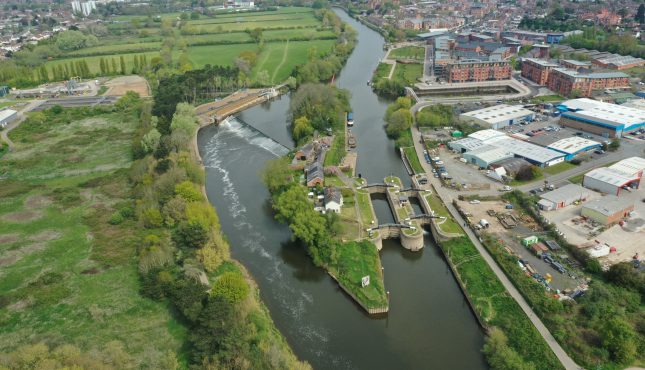
Explore the Island!
Find out more about the main sights of Diglis Island below.
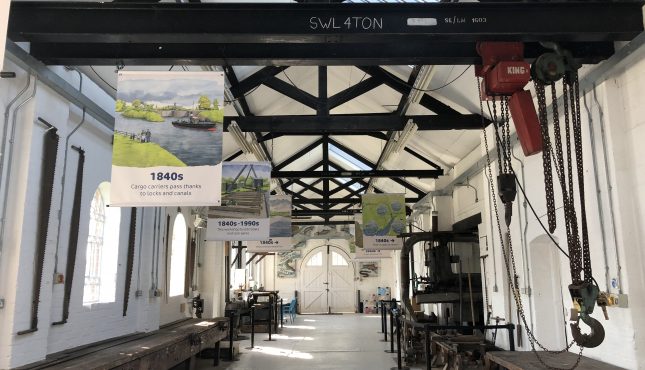
The Workshop
The workshop is a key feature of the island. Constructed immediately before the locks, it was the maintenance yard for the whole of the River Severn Navigation. In later years, it also served the maintenance teams working on the Gloucester & Sharpness Canal, the Monmouthshire & Brecon Canal, the Bridgwater & Somerset Canal, the Kennet & Avon Canal and the lower sections of the Worcester & Birmingham Canal.
It was a hub for lock gate construction, and any other requirements for lock and weir maintenance. The joinery teams could also turn their hand to boat building, particularly small punt-like boats to help maintenance staff get to sites on the Severn.
Inside the workshop today you can still see the work benches from 1940s-50s, the chain hoists which were added in the 1950s, and the huge mortice machine – installed in 1963. The workshop remained in use until the 1990s.
The workshop is now used as a project space for Unlocking the Severn. We open the space up for visitors on open days, tour groups, and also host school visits during term time.
To find out when we are open for visits, see our Diglis Island and Fish Pass tours page.
For more information about school visits, see our schools page.
The Crane
The crane was brought up to Worcester from Cardiff Docks in the late 1950s. The crane was no longer needed in Cardiff, so Maintenance Foreman William Munn decided it would be useful for operations on Diglis Island. The crane was used for lifting timber and lock gates between the boats on the river and Diglis Island. It was used up until the 1990s.
In almost 40 years, there were only 4 operators of the crane. Knowledge and training was passed from one man to the next. There would always be two men working with the crane at any one time: a crane operator and a banksman.
The Diglis Island crane is listed as a local historical asset.
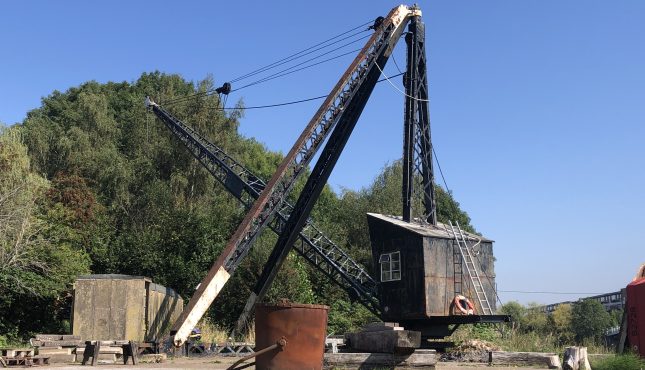
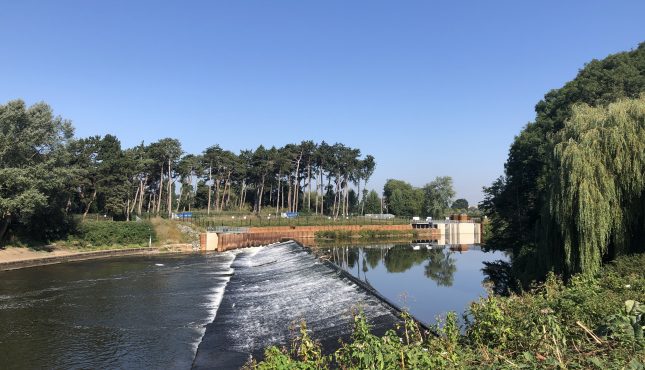
Weir Viewing Point
From here you can appreciate the extent of this island in the Severn. It also provides a good view across Diglis weir. The weir at Diglis was one of several built across the River Severn to improve navigation and trade. Prior to modifications, the natural river was tidal up to Worcester. The weir measures around two metres in height and was installed to raise the water levels upstream, allowing boats to travel further North throughout the year.
Although great for navigation, the weirs proved very problematic for fish. The barriers in the river make it much harder for fish to move upstream. Many fish species migrate upstream to spawn in shallower depths of water, and the large 2m large height change in the river make the barrier impassable for the majority fish in most flow conditions. By exception, fish such as salmon are able to physically ‘leap’ the weir, however the activity requires huge amounts of energy and often causes damage to the fish.
One of the species most affected was the twaite shad, the main species monitored as part of the Unlocking the Severn project. Twaite shad migrate from the sea to the River Severn each spring to spawn. They are strong swimmers, but unable to jump over weir. With access to historic spawning grounds cut off, the population crashed.
Diglis fish pass, seen at the at the far end of the weir, was one of 4 large engineering structures built along the River Severn. The fish passes pass allows fish to bypass the weir and continue to their spawning grounds upriver.
Meet the Diglis Island volunteers
Some of the Diglis Island volunteer groups
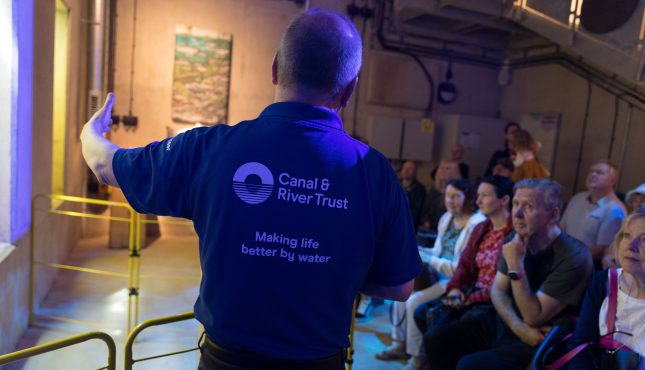
Diglis Island Guides
Our Diglis Island Guide volunteers lead the tours of Diglis Island and Diglis fish pass. They expertly guide groups through the history, geography and importance of the island. As well as explaining how the fish pass has restored the river for fish.
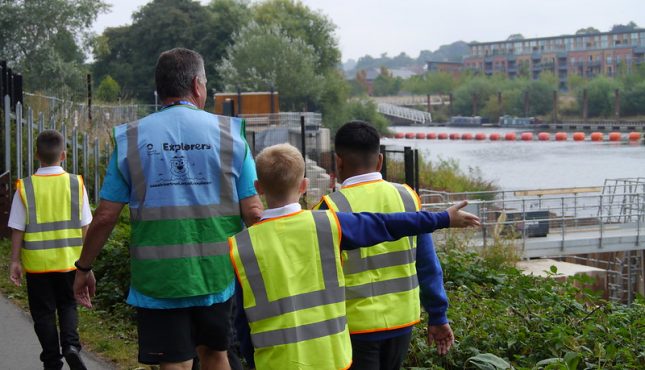
Explorer Volunteers
The Canal & River Trust Explorers are in charge of running the school visits to Diglis Island and Fish Pass. At the end of our first academic year running school visits (2021-22), the Explorers had welcomed 658 school children and staff.
Find out more about our school visits on our schools webpage.
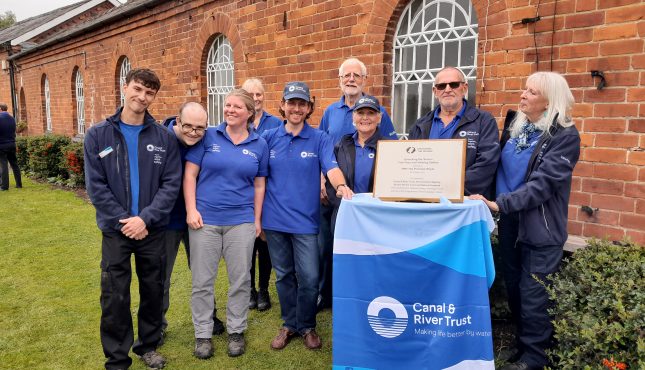
Green Team
Responsible for maintaining Diglis Island and creating new habitats, there’s nothing this lot can’t turn their hand to. Whether that’s creating safer walkways, building a sand martin colony box, or planting a wildflower meadow, and much more besides!
Diglis Island and fish pass tours
Between March and October, Unlocking the Severn have been running guided tours of Diglis Island and Diglis fish pass. These tours start on Diglis Island, where visitors are able to step onto the private manmade island and learn all about its history. Visitors are then taken round to the other side of the river to visit Diglis Fish Pass – the biggest deep vertical slot fish pass in England and Wales.
After taking in the impressive 100m long structure from the terrace, and learning about how the structure provides an easier route upstream for fish, visitors descend into the underwater viewing gallery. The viewing gallery features a large viewing window, through which wild fish may be spotted swimming past!
For more information about our tours, please visit our tours webpage here.
